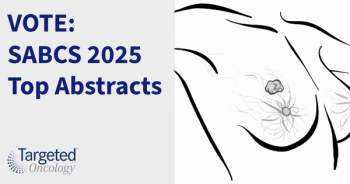
Guidance Released by the FDA Assists Developers in Demonstrating Effectiveness of Drugs and Biologics
The FDA released a draft guidance document entitled “Demonstrating Substantial Evidence of Effectiveness for Human Drug and Biological Products Guidance for Industry” to clarify the evidence required to prove the effectiveness of drugs and biologics. The statement is a supplement for the 1998 guidance entitled “Providing Clinical Evidence of Effectiveness for Human Drug and Biological Products.” The draft guidance is designed to aid the submission of new drug applications, biologics license applications, or applications for supplemental indications.
The FDA released a draft guidance document entitled “Demonstrating Substantial Evidence of Effectiveness for Human Drug and Biological Products Guidance for Industry” to clarify the evidence required to prove the effectiveness of drugs and biologics. The statement is a supplement for the 1998 guidance entitled “Providing Clinical Evidence of Effectiveness for Human Drug and Biological Products.” The draft guidance is designed to aid the submission of new drug applications (NDAs), biologics license applications (BLAs), or applications for supplemental indications.1
“As our scientific knowledge advances, and drugs and biologics with novel mechanisms are being developed to treat conditions that were previously without treatments, there is a need for additional guidance on the flexibility in the amount and type of evidence needed to establish their effectiveness. For example, while randomized trials with a placebo control are often the best way to demonstrate effectiveness, in some situations, other designs can also meet the standard for approval,” Amy Abernethy, MD, PhD, principal deputy commissioner of the FDA, said in a statement.
The original guidance was issued after the Food and Drug Administration Modernization 23 Act of 1997 (FDAMA), which stated that a single confirmatory trial plus confirmatory evidence may be enough to meet the substantial evidence requirement for effectiveness. At that time, it was generally accepted that 2 adequate and well-controlled trials were needed to support efficacy. Because the FDA’s guidance made the evidence more flexible, the 2019 draft guidance names the circumstances in which substantial evidence of effectiveness can be provided instead of 2 adequate and well-controlled clinical trials.2
“There are circumstances where evidence generated using a variety of clinical trial designs, end points, and statistical methodology can support effectiveness, such as in certain drug development programs for rare diseases. Today, we are issuing draft guidance to provide additional information to industry and stakeholders on evidence that meets the statutory standard for substantial evidence of effectiveness and reflects the evolving landscape of drug and biologic development,” Abernethy stated.
The standard effectiveness for drugs and biologics included the statutory standard issued by the United States Congress in 1972, which stated that substantial evidence was required before any drug or biologic can be licensed. Second, a scientific basis for the statutory standard was required to distinguish the effect of the drug from causes, for example, spontaneous change in the course of the disease, placebo effect, or biased observation.2
Evidence must be of quality to establish the effectiveness of drugs and biologics. This can be shown through trial designs, trial end points, and statistical considerations. The acceptable trial designs were listed as placebo concurrent control, dose-comparison concurrent control, no treatment concurrent control, active treatment concurrent control, and historical control. The FDA notes, however, that it is sometimes difficult to interpret effectiveness with these trial designs. Both clinical end points and surrogate end points are deemed reliable methods of deciding the effectiveness of therapies. For the statistical considerations, the FDA guidance is to have limited uncertainty surrounding the findings from each trial. Additionally, findings should not be dependent upon chance and should be specified ahead of time to limit incorrect conclusions.
Section 5 of the draft guidance explains the quantity of evidence required to show the effectiveness of a drug or a biologic. The option for meeting the standard requirements for substantial evidence drawn from 2 clinical trials, there must be either;
- two adequate and well-controlled clinical investigations,
- one adequate and well-controlled large multicenter trial that can provide substantial evidence of effectiveness.
To meet the standard requirements for substantial evidence supported by a single clinical trial, the options are;
- one adequate and well-controlled clinical investigation on a new indication for an approved drug, supported by existing adequate and well-controlled clinical investigation(s) that demonstrated the effectiveness of the drug for its other, closely related approved indication(s),
- one adequate and well-controlled clinical investigation supported by data that provide strong mechanistic support,
- one adequate and well-controlled clinical investigation with compelling results, supported by additional data from the natural history of the disease,
- one adequate and well-controlled clinical investigation of the new drug supported by scientific knowledge about the effectiveness of other drugs in the same pharmacological class.
In addition, meeting the standard requirement for substantial evidence of a new population, different dose, regimen, or dosage may be done by submitting prior evidence, which can include information such as similar pharmacologic activity, or evidence supporting a conclusion of a similar disease type.
The FDA does name circumstances in which the effectiveness of drugs and biologics can be determined by other methods. These circumstances include cases of life-threatening disease, severely debilitating unmet medical need, rare disease, or if conducting a human efficacy trial is not ethical or feasible.
“It is part of our longstanding commitment to the flexibility when considering types of data and clinical development approaches with the ultimate goal of getting safe and effective treatments to patients faster,” said Abernethy.
References
- FDA In Brief: FDA provides clarity regarding evidence needed to demonstrate effectiveness for drugs and biologics. FDA website. https://bit.ly/2QlC1N5. Published December 19, 2019. Accessed January 3, 2019.
- Demonstrating substantial evidence of effectiveness for human drug and biological products guidance for industry. FDA website. https://bit.ly/2u93LMf. Published December 2019. Accessed January 3, 2019.









































